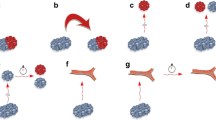Abstract
Malignant tumours contain normal cells, descendants of transformed cells, and conceivably also initiated cells which have taken some but not all of the steps toward malignancy, and hybrid cells. Tumours are propagated by multiplication of clonogenic cells, which are a subclass of the descendants of transformed cells. The clonogenic cells of a tumour may differ in respect of morphology, karyotype, metastatic capacity, sensitivity to cytotoxic drugs, expression of cell surface antigens and hormone receptors, immunogenicity, sensitivity to the immune reaction of the host, and other properties. Evidence (disputed by some) suggests that selection of particular subpopulations plays a role in tumour metastasis and recurrence. Heterogeneity may be due to pleoclonal origin, generation of phenotypic diversity within a clone, or spontaneous hybridization and chromosome loss. The possibility of interaction between different subpopulations must be taken into account in discussing tumour cell population kinetics. Heterogeneity also has important therapeutic implications and may help to explain the failure of some therapeutic regimes and the success of others.
Similar content being viewed by others
Rights and permissions
About this article
Cite this article
Woodruff, M. Cellular heterogeneity in tumours. Br J Cancer 47, 589–594 (1983). https://doi.org/10.1038/bjc.1983.96
Issue Date:
DOI: https://doi.org/10.1038/bjc.1983.96
- Springer Nature Limited
This article is cited by
-
Use of NeoR B16F1 murine melanoma cells to assess clonality of experimental metastases in the immune-deficient chick embryo
Clinical & Experimental Metastasis (1988)
-
A morphometric study of invasion and metastasis in human colorectal carcinoma
Clinical & Experimental Metastasis (1987)




